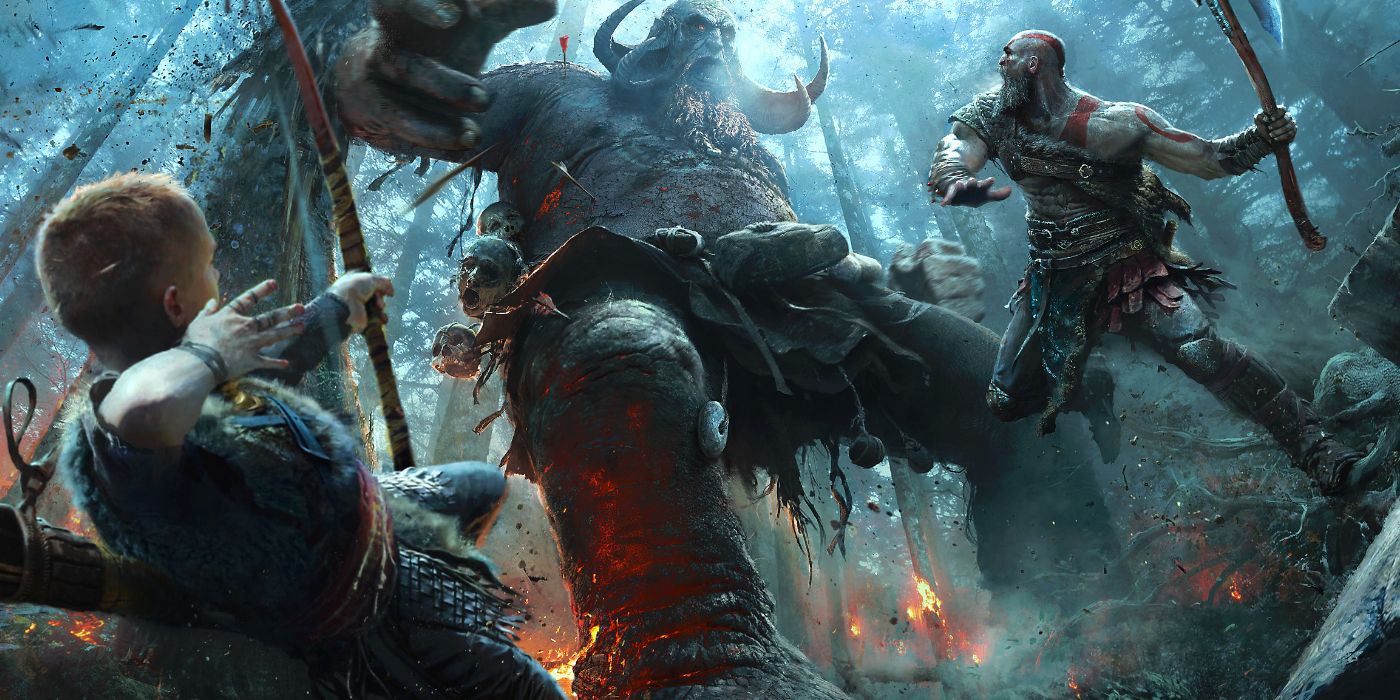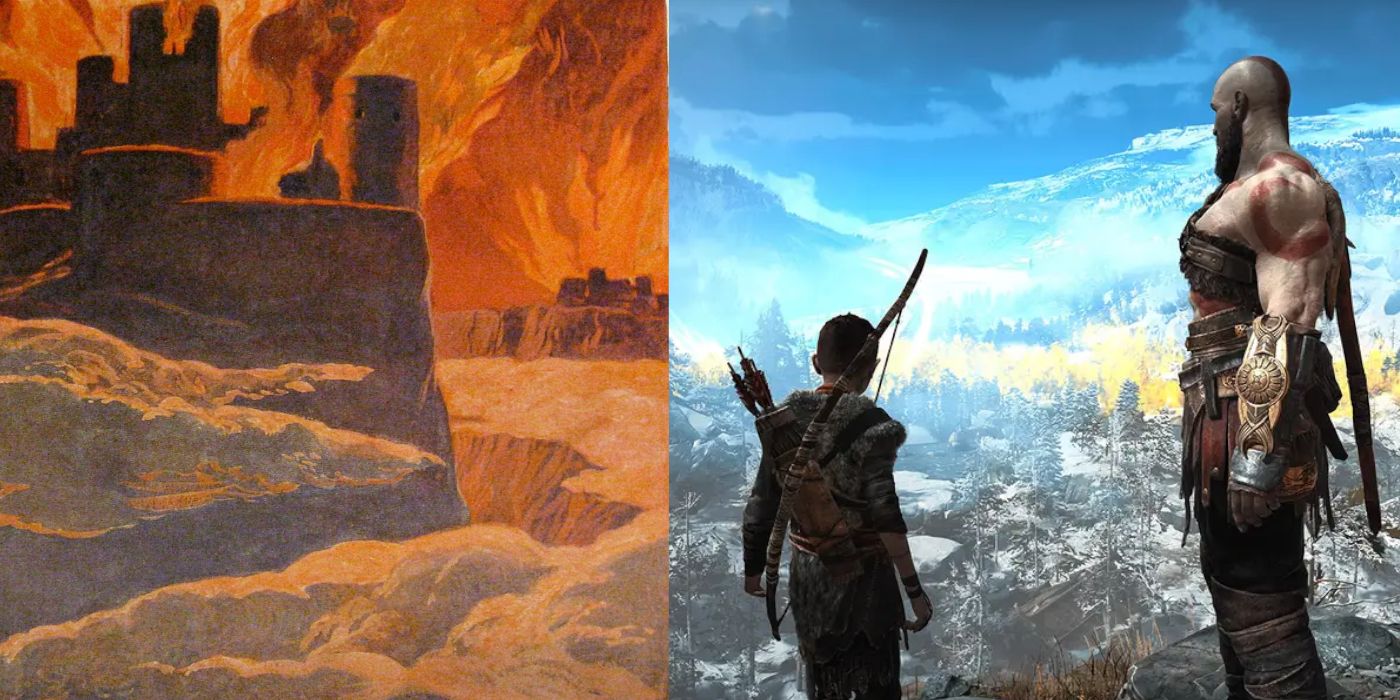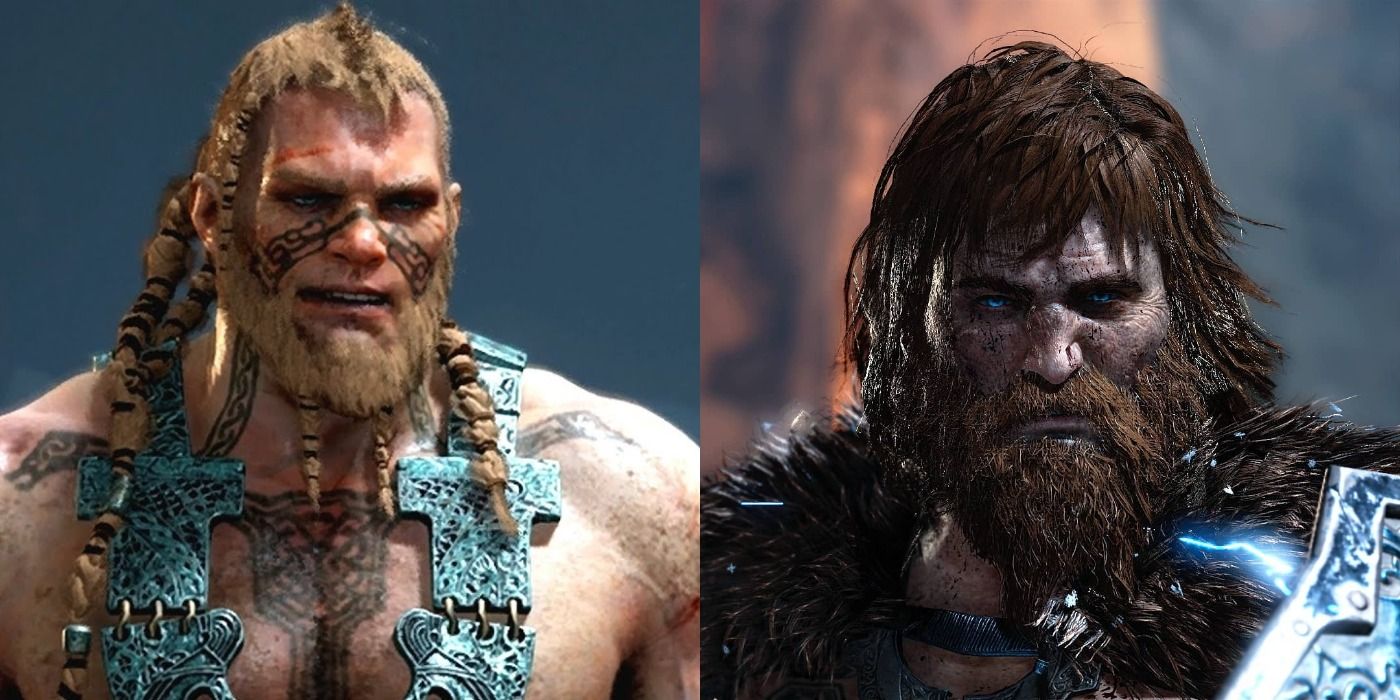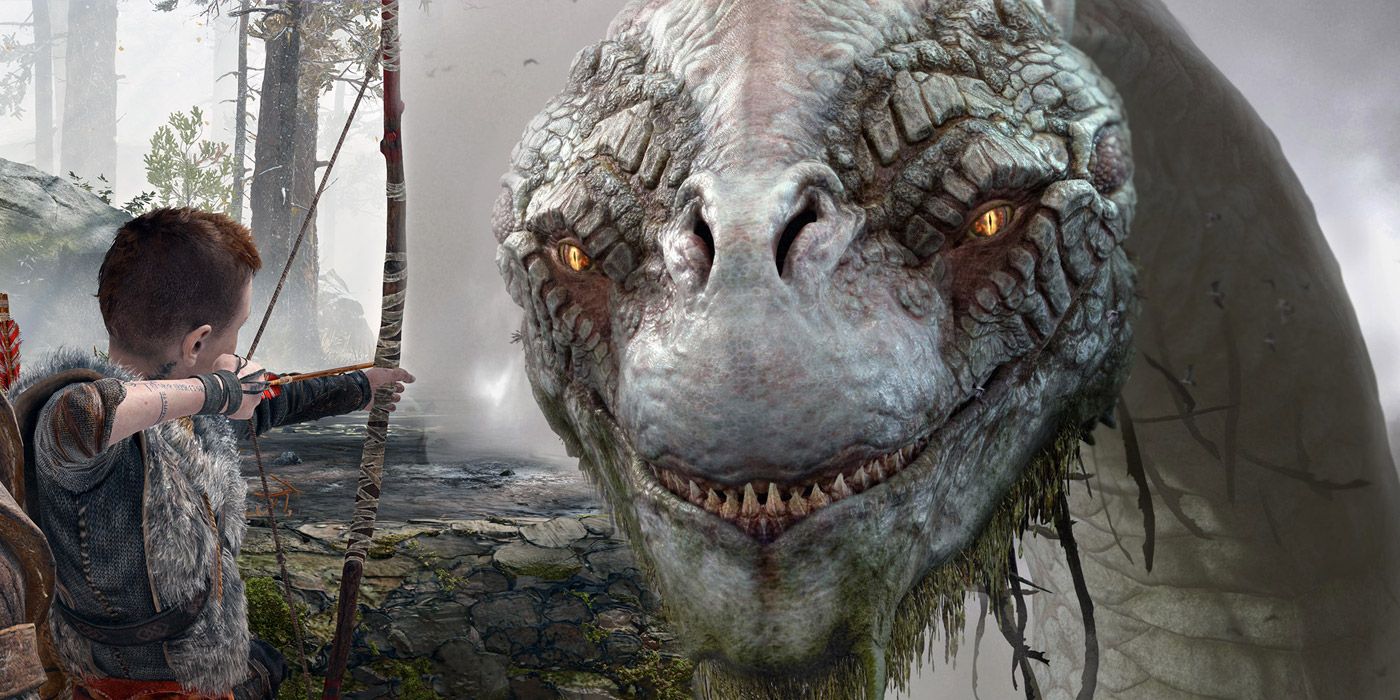The next God of War game will likely take place during the events of Ragnarok, the Norse “Twilight of the Gods,” or at the very least, show more build up for it. This is indicated by the announcement trailer. But there are a few different accounts of Ragnarok, and the two main ones have drastically different endings.
When trying to figure out which ending the next God of War may be leaning towards, there’s one decision that Kratos and Atreus make which offers a huge hint. Though the games don’t follow the mythology one-for-one, this decision has implications for Ragnarok, and the fate of the entire God of War world.
The Two Ragnaroks
There are two main accounts of Ragnarok which, by-and-large, are the same until the last few moments. In both cases, Odin is devoured by Fenrir, Loki and Heimdall kill one another, and Thor kills the World Serpent before succumbing to its deadly poison. After that, however, things get tricky. In one account, that’s it. The world ends. Midgard – AKA the mortal world – is consumed by the fires set by the giant Surtr, and then destroyed by a huge flood which washes over the world. In the second telling, however, not all is lost.
A few Aesir survive Ragnarok, becoming a new pantheon of gods. Odin’s sons Vali and Vidarr take over the temples, while Thor’s two sons Magni and Modi take up Thor’s hammer Mjolnir. Baldur, whose death brings about Ragnarok to begin with, is reborn. If God of War wants to down the route of this cycle of death and rebirth, there’s just one problem: Magni and Modi are already dead.
Magni and Modi
Magni and Modi appear in 2018’s God of War as two demigods who accompany Baldur on his mission to capture Kratos and Atreus and bring them to Odin. In God of War, Magni is portrayed as Thor’s favorite child, given sole credit for lifting the leg of the jotunn Hrungnir and saving his father as in the myth, when Mimir reveals that both Magni and his half-brother Modi performed the feat.
When Magni and Modi reach Kratos and Atreus, Kratos is able to overpower Magni, killing him with a blow to the head from the Leviathan Axe. Overwhelmed with fear at seeing his older brother fall, Modi flees, though not without taking a few arrows from Atreus’ bow first.
Magni and Modi’s belief that they will one day inherit Mjolnir is referenced in God of War. After Magni’s death, Modi fears receiving Mjolnir simply because his older brother has died, and sets out to try and avenge Magni to make himself worthy of his inheritance. After Thor beats Modi to near-death for leaving his brother to be defeated by Kratos, Modi is found once again by Kratos and Atreus.
Though Modi is severely weakened and unable to put up much of a fight, Atreus stabs him in the neck and pushes him into a canyon where he’s presumed dead. The deaths of Magni and Modi point to one thing: God of War’s Ragnarok will likely take place in a version of the myth where the end of the Norse gods does not lead to a cycle of death and rebirth, or, at least, not the kind of one presented in the alternate telling of the mythology.
Other Possibilities
However, there are a few other possible ways Ragnarok could be brought to life in the God of War universe. For a start, it remains possible that Modi survived falling down the chasm after being stabbed by Atreus, which would allow him to inherit Mjolnir after Ragnarok anyway. This seems unlikely, however, as the Modi seen in God of War would hardly present an inspiring successor or even a satisfying final boss after the potential deaths of Thor and Odin in Ragnarok.
There’s one piece of evidence which would suggest that Modi is in fact dead, however. When Kratos and Atreus are in the City of the Dead in Helheim, Atreus, AKA Loki, sees visions of himself killing Modi. While Modi himself is never seen directly, this would imply that he was killed and his spirit ended up in Hel.
It’s also possible that while the cycle of Ragnarok as it appears in the myth will not be present in the upcoming God of War sequel, another kind of cycle will be portrayed. The mythologies portrayed in God of War exist in a kind of cycle themselves. Though the Greek gods die in the original God of War trilogy, they are, in one sense, reborn in the form of the Norse Aesir and Vanir.
This could mean that though the Norse gods will all be killed in God of War’s Ragnarok sequel and the Norse pantheon will end, another pantheon will arise at some point in the future to take their place. This sort of ending might be considered in the spirit of the Ragnarok myth while not requiring any Aesir to survive to take over the individual roles of the Norse gods.
Either way, the deaths of Magni and Modi pose some of the biggest challenges for players trying to figure out just what events from the mythology might take place in God of War’s own Ragnarok. The final events of Ragnarok, if they follow the Norse mythology closely, will see the death of Atreus as well.
The final panel of the Jotunheim mural, however, doesn’t appear to depict Atreus’ death, but Atreus cradling a figure that appears to be Kratos – albeit without the red tattoos – as a strange substance connects them by the mouth. This would imply that the final events of Ragnarok may be most subject to change in God of War, including the circumstances regarding the fiery destruction and rebirth of the world. For now, however, fans dying to know just how God of War will realize its Norse apocalypse will just have to wait.
The God of War sequel is planned to release in 2021 for PS5.




